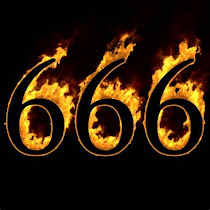Is the Mark of the Beast Physical or Allegorical?
The Mark of the Beast is one of the most discussed and debated topics in Christian eschatology, largely due to its appearance in the book of Revelation, specifically Revelation 13:16-18. In this passage, it is described as a mark placed on the right hand or forehead, and no one can buy or sell without it. But what does this mark truly represent? Is it physical, or is there a deeper, spiritual meaning behind it? Let’s explore both views.
The Physical Interpretation
For many, the Mark of the Beast is seen as a literal, physical mark that will appear in the end times. This view often considers modern technology and advancements such as microchips, tattoos, or biometric identification systems as potential ways this mark could manifest. Some believe that as society moves towards cashless systems and increasingly advanced tracking technologies, the idea of a literal "mark" seems more plausible.
The idea of a physical mark can be unsettling, especially with the rapid pace of technological advancements. Some argue that the Bible is warning about a future where individuals are forced to choose between allegiance to a worldly system (represented by the Beast) and allegiance to Christ. These proponents see the mark as a sign of surrendering to a secular or godless system that seeks control over every aspect of a person’s life.
The Allegorical Interpretation
Others, however, interpret the Mark of the Beast as a symbolic or allegorical representation rather than a physical mark. In this view, the mark represents a spiritual or moral choice—a sign of the individual's rejection of God and submission to worldly forces of evil. The “mark” is seen as an inward condition of the heart and mind, symbolized by the hand and forehead in the text.
The right hand, in biblical language, often represents action or works, and the forehead is associated with thoughts or beliefs. Thus, receiving the mark on both could symbolize a total allegiance to the system of the Beast, both in what one does and in what one believes. This interpretation suggests that the "mark" is not something physical that can be seen but something deeper, related to the choices people make regarding whom they worship and serve.
For those who hold to this allegorical view, the Mark of the Beast is not about a particular event in the future but a constant struggle between spiritual forces of good and evil. It challenges Christians to remain steadfast in their faith and avoid compromising their allegiance to Christ for worldly gain.
Which View Is Correct?
The truth is, both interpretations carry important lessons. Whether the Mark of the Beast is physical or allegorical, the underlying message remains the same: believers must remain faithful to God and avoid giving in to worldly temptations that would lead them away from His truth.
The Bible often uses symbolic language, especially in prophetic books like Revelation. This means that there is likely a deeper, spiritual meaning behind the Mark of the Beast. However, it's also important to be mindful of current events and technology, which may play a role in how this prophecy could be fulfilled in the future.
A Call to Faithfulness
No matter how one interprets the Mark of the Beast, the call is clear: Christians are to remain faithful to Christ and not allow anything—whether a physical mark or a spiritual compromise—to separate them from the love of God. As Revelation 14:12 says, "This calls for patient endurance on the part of the people of God who keep his commands and remain faithful to Jesus."
Ultimately, whether the Mark is physical or allegorical, it serves as a reminder that our allegiance must be to Christ alone. The Mark of the Beast is a challenge to choose whom we will serve and to stand firm in our faith, trusting in God's ultimate victory over evil.
Dr. Phil Spears Visit us at www.thechurchofgodsa.com

Comments
Post a Comment